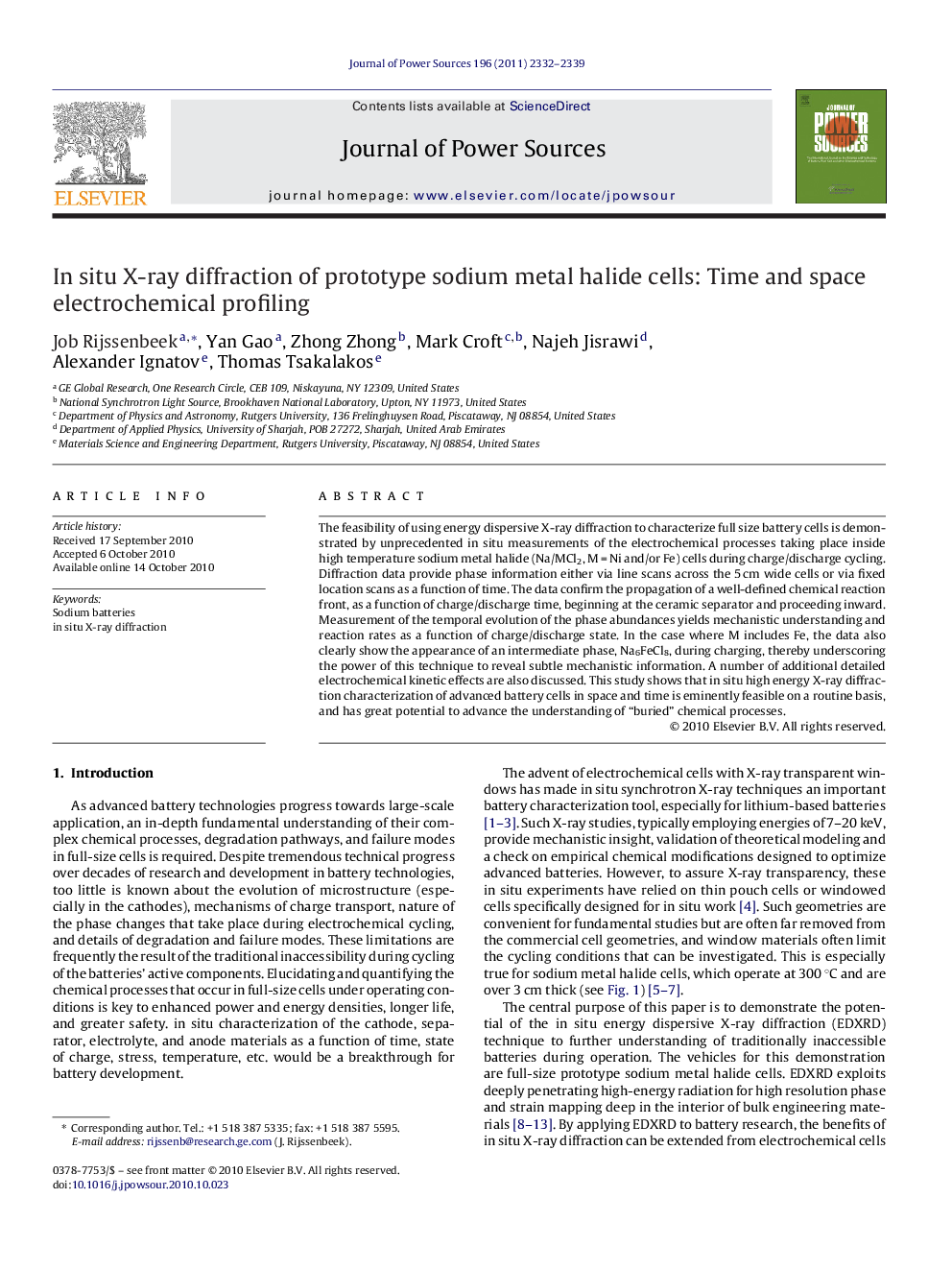| Article ID | Journal | Published Year | Pages | File Type |
|---|---|---|---|---|
| 1288907 | Journal of Power Sources | 2011 | 8 Pages |
The feasibility of using energy dispersive X-ray diffraction to characterize full size battery cells is demonstrated by unprecedented in situ measurements of the electrochemical processes taking place inside high temperature sodium metal halide (Na/MCl2, M = Ni and/or Fe) cells during charge/discharge cycling. Diffraction data provide phase information either via line scans across the 5 cm wide cells or via fixed location scans as a function of time. The data confirm the propagation of a well-defined chemical reaction front, as a function of charge/discharge time, beginning at the ceramic separator and proceeding inward. Measurement of the temporal evolution of the phase abundances yields mechanistic understanding and reaction rates as a function of charge/discharge state. In the case where M includes Fe, the data also clearly show the appearance of an intermediate phase, Na6FeCl8, during charging, thereby underscoring the power of this technique to reveal subtle mechanistic information. A number of additional detailed electrochemical kinetic effects are also discussed. This study shows that in situ high energy X-ray diffraction characterization of advanced battery cells in space and time is eminently feasible on a routine basis, and has great potential to advance the understanding of “buried” chemical processes.
